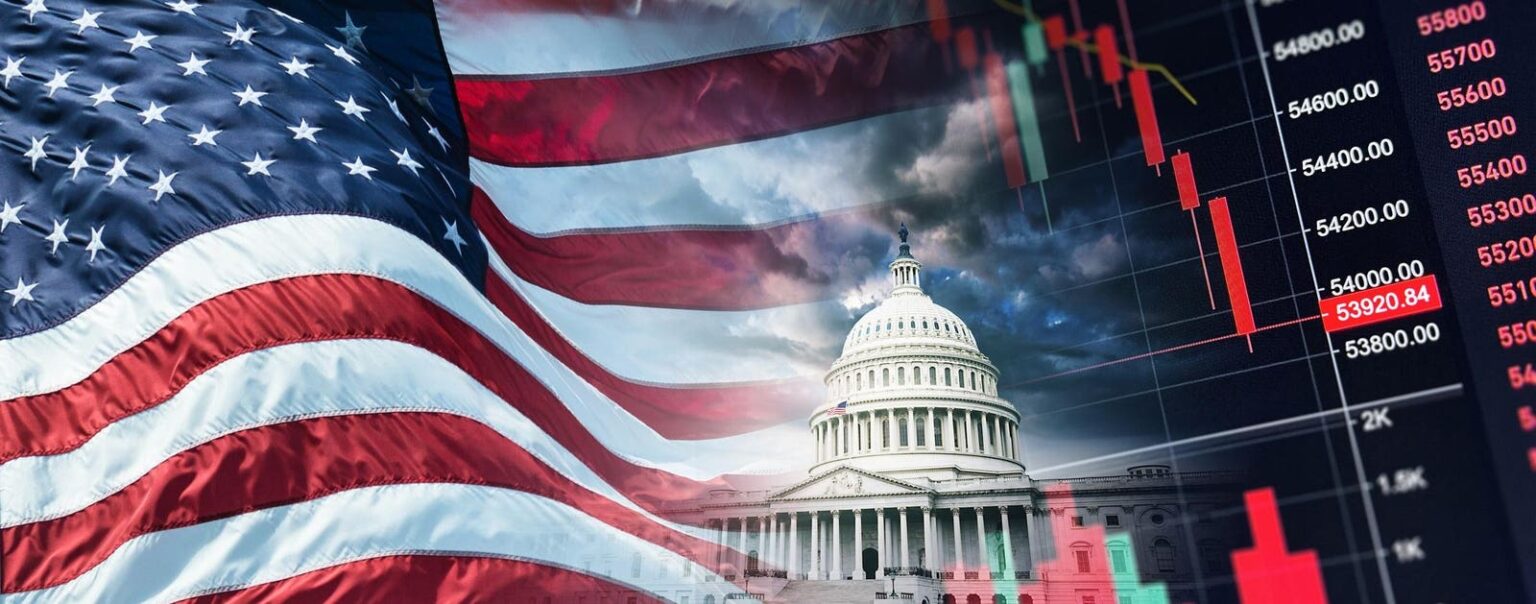Moody’s credit rating agency issued a “negative outlook”, however, the markets scarcely noticed. Bond yields stayed put. Stocks shrugged. The dollar stood firm. But more importantly, the Moody’s downgrade means trust is slowly eroding.
This isn’t about the United States defaulting. The default isn’t due to the government failing to make an interest payment. Credibility underpins every currency, bond, and valuation. When credibility cracks, repricing is quiet. It is subtle, systemic, and has a longer-lasting effect. Markets don’t scream at trust loss. They whisper. Smart investors listen. Downgrades don’t represent the actual risk. It signals a steady, grinding erosion of faith in the world’s biggest borrower.
What The Moody’s Downgrade Actually Said
Political instability threatens fiscal strength. The statement was clear:
The outlook change to negative reflects increased threats to the U.S.’s fiscal strength due to debt affordability constraints and the lack of a clear medium-term fiscal strategy.
Two main issues are conveyed:
No credible debt management approach exists.
Washington deadlock is fundamental, not episodic.
This exceeds rating outlook. It undermines market stability illusions. We now assess the U.S. by its stewardship, not its numbers. This isn’t about the next quarter—it’s about the next decade
Why Markets Shrugged Off The Moody’s Downgrade (and Why That’s Risky)
On the surface, nothing changed; therefore, markets didn’t react. Deepest and most liquid, U.S. Treasuries remain the global safe haven. Capital flows move markets, not ratings. America continues to lead the world in terms of fiscal discipline. However, that logic conceals the truth. Credit spreads are rising. Chinese and Japanese purchasers are quietly cutting Treasury exposure. Gold is rising. These are trust cues, not panic. And they shift. Markets don’t howl at credibility loss. They whisper. The danger is complacency, not catastrophe. Investors who disregard Moody’s warnings fail to understand the true message: trust isn’t disappearing, but it’s quietly vanishing, taking valuation certainty with it.
Historical Echoes: 2011 vs. 2024
When S&P downgraded the U.S. in 2011, markets panicked—briefly. Volatility surged, but Treasuries rallied, and the moment passed. Back then, the downgrade was a warning about potential risk. Today, the context is entirely unique. Inflation is sticky, deficits are hitting records, the Fed is no longer a reliable backstop, and Washington is gridlocked with no fiscal discipline in sight. This issue isn’t a theoretical concern; it’s a structural one. Instead of responding to potential events, Moody’s is responding to systemic factors already present. Downgrades don’t always cause immediate selloffs, but they do often reset how markets price credibility. The warning signs in 2011 were about potential. The warnings in 2024 are about patterns.
The Real Moody’s Downgrade Risk: Repricing U.S. Trust
Trust is America’s most valued financial asset, not AAA ratings. Global markets have priced American debt as secure, stable, and liquid for decades. But as trust erodes, everything changes. Instead of default risk, investors demand more to hold what no longer feels unassailable, raising borrowing costs. As confidence declines, the dollar suffers structurally. Perhaps most importantly, asset class valuations change. Mortgages, corporate bonds, and developing market debt are tied to Treasury benchmarks. Questions about those benchmarks lead to changes in global risk pricing. This situation does not involve a debt crisis. A trust crisis is more nuanced and far-reaching. The longer markets ignore the signal, the harder the adjustment.
What Smart Investors Should Watch
Investors who prioritize signals over noise should concentrate on pressure points instead of headlines. Treasury auctions will reveal more than a press release if foreign participation is low, especially from China and Japan. Watch the Fed— Powell won’t mention Moody’s, but if long-end rates rise, expect policy signals. If corporate credit spreads, particularly in the high-yield sector, widen while stock prices remain stable, it indicates a problem. In particular, listen to Washington. The Moody’s downgrade presents a challenge. One part of the issue is that the government is unwilling to debate budgetary reform. Moody’s is early, but the market rarely favors latecomers.
Read the full article here

